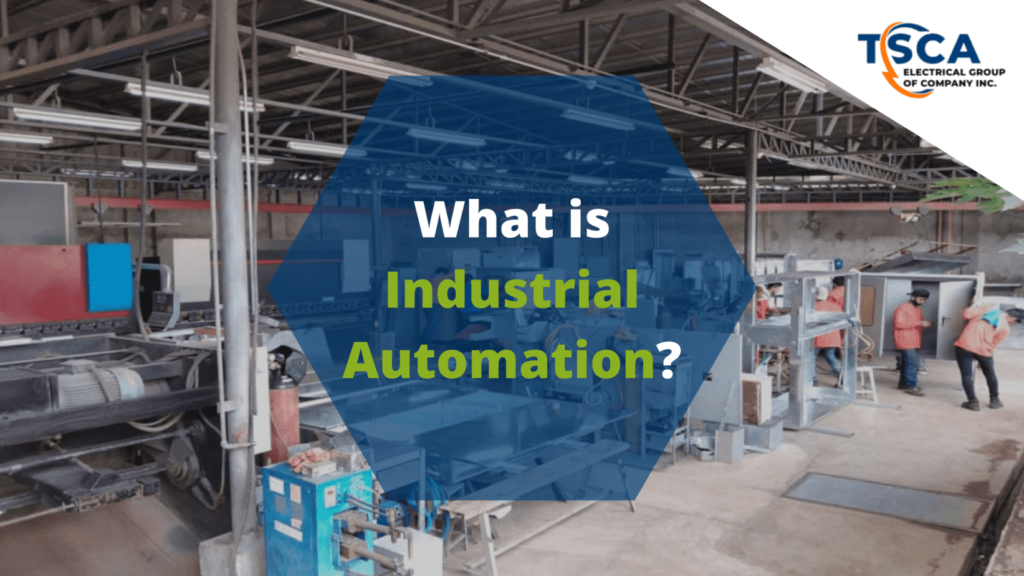Industrial automation is the use of technologies such as computer software and robotics to control machinery and processes which replace human beings in performing specific functions. The functions are primarily centered on manufacturing, quality control and material handling processes.
The initial goals of industrial automation were focused on increasing productivity by extending work hours, and reducing the costs of maintaining a large human workforce. These goals have gradually shifted, and are now more focused on improving quality and flexibility.
Types of Industrial Automation Systems
Ranging from a conveyor belt to advanced AI and machine learning systems, it is important to understand the types of industrial automation to pinpoint where each technology will find the greatest benefit. Not every solution or trend will fit your application or goals.
1. Fixed Automation
Fixed automation often has a set task, continuous workflow, large volume production, and a high barrier of entry. Also called hard automation, this type of industrial automation rarely sees changes. The expense and time associated with a new product or changes in production are high. For lower volume or shorter product life cycles, programmable industrial automation will yield greater benefits.
2. Programmable Automation
Often associated with batch production, programmable automation works well for making several dozens to thousands of units. Lower production volume results in more changeovers which are considered when determining batch sizes and lead times. However, many companies are concerned with improving uptimes and increasing production. These goals are leading to more flexible automation.
3. Flexible Automation
As industrial automation types progress, the processes seem to involve less human interaction and downtime while increasing the range of products produced on one machine or production line. Flexible automation often involves precise electromechanical controls; A CNC machine is a good example. Changeovers can be performed automatically by reducing downtimes. This works well for batch production but allows for a more in-demand production and increased customization.
4. Integrated Automation
Integrating devices and machines onto a single control system connects the dots between processes, production lines, and more. Integrated automation is a more holistic approach to manufacturing. Independent machines and production lines are able to communicate on a network to become increasingly flexible and move towards in-demand manufacturing and increased customization.
Give yourself the opportunity to learn all about Brazilian online casinos with our comprehensive guide, zdus https://www.mundodocker.com.br/topic/betbryonlinecasino/. From origins to the latest news, everything you need is here.
A trend driving industrial automation is monitoring devices that are quick and easy to integrate into any type of automation. Real-time monitoring can produce data to make production decisions, adjust the supply chain, or manage labor. Monitoring will help decision-makers determine where and how industrial automation will yield the greatest results.
The Benefits of Industrial Automation
There are several advantages of industrial automation with manufacturers, OEMs, and industrial operations can leverage to increase operational efficiency.
Monitoring provides data to ensure new automated solutions meet goals. If production data exists in silos it will be difficult to find how to integrate automation solutions. Data from all assets will yield the greatest benefits. To keep data from becoming a liability, find IIoT and monitoring devices that offer built in security. Encryption, gateway protection, and Cloud services are some of the features that act like security guards to keep your assets protected. With security in mind, consider which of the following benefits might provide the greatest value to your application.
1. Improve Worker Safety
To start, industrial automation can help free workers from dull, dangerous, and dirty tasks. Industrial automation can reduce injuries associated with repetitive motion and lifting objects to create a safer work environment. This initial benefit can make a worker’s day-to-day better while freeing them for more complex tasks.
2. Increase Productivity
Downtime, performance problems, and bottlenecks all slow down production. Using monitoring and automated devices communicating across a single platform, these problems can be found and mitigated before production slows. Downtime and performance problems can be reduced or eliminated through data that offers predictive maintenance. Real-time information is able to find root causes of problems, regulate inventory, and monitor production speeds so adjustments can happen before bottlenecks occur.
3. Higher Quality
Connected automation devices offer greater repeatability, higher fidelity, data collection from almost anywhere in a production line, and send notifications to anyone with access. Catching changes in quality early can improve production, reduce waste, cut down on rework, and increase profit. Additionally, automated devices able to verify and validate quality can improve transparency and ensure parts produced meet a customer’s requirements before leaving the factory floor.
4. Better Decision Making
As more devices are connected and controlled with industrial automation tools, managers will be able to generate more accurate models to find new revenue streams and provide better estimates to build stronger relationships with stakeholders. Industrial automation technology can increase the ability to monitor and control multiple locations remotely for a holistic solution that can streamline supply chain management, track assets in the field, and provide data to make more informed decisions.
—
Thanks for reading, visit our blog page for more articles. We would love to hear about your electrical needs. Furthermore, please feel free to email or call us. Someone from our team will respond to your request right away. Feel free to get in touch with us.
1st Source(s): https://www.machinemetrics.com/
2nd Source(s): https://www.suse.com/
“DISCLAIMER: I don’t own the COPYRIGHT in the content of this article. This article is purely for sharing information only. If the owner is on the source link above, click the link to visit them.”





